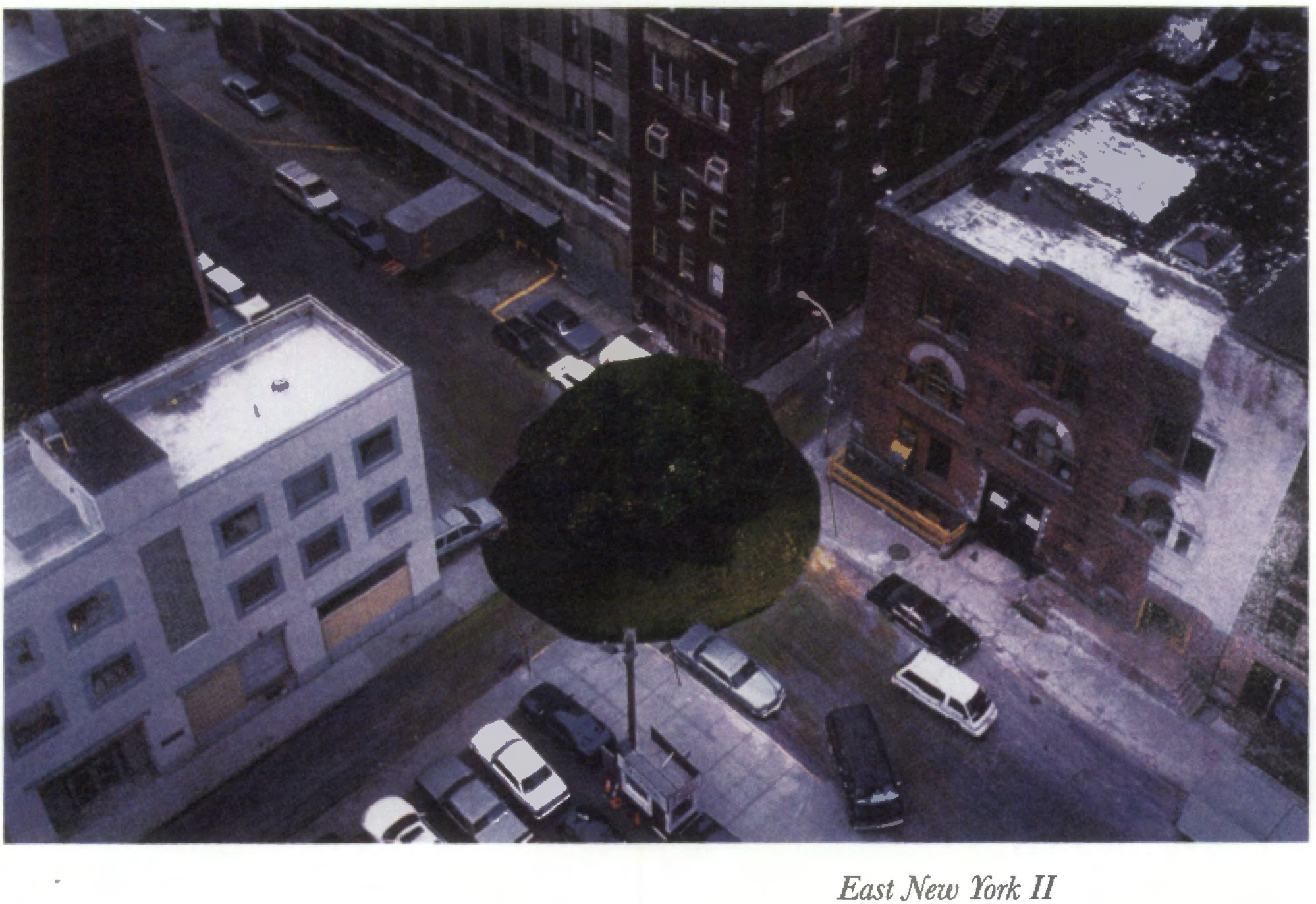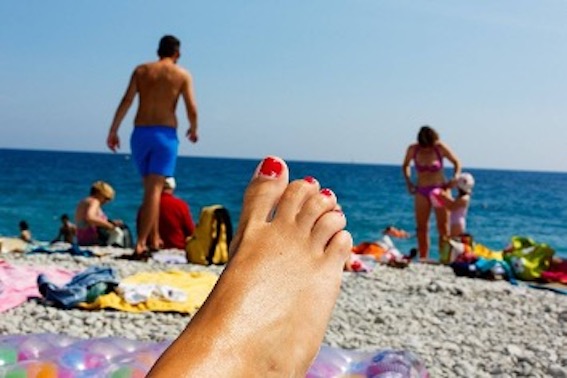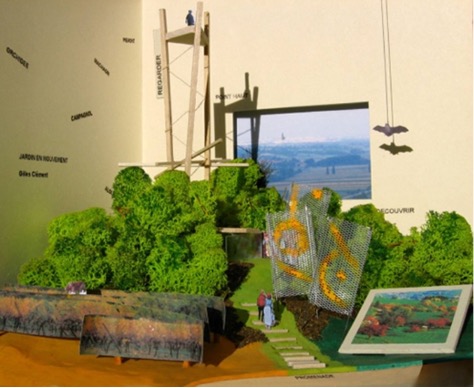DESIGN A NEW BIRTH CULTURE 2022
WORKSHOP – SEMINAR – COMPETITION – EXHIBITION – RESEARCH
![]()
QUESTIONS CONCERNING NEW VISION
“In today’s culture, birth is in crisis” says Milli Hill, author of the Positive Birth Book who campaigns for dignity and right of choice for women planning birth. But perhaps the whole culture before and after birth needs rethinking as well? We are inviting designers to create a vision of a New Model of a place perfect to give a birth.
Evidence suggests that architecture may ease or hinder the natural process of giving birth.
Birth places are designed primarily to meet the needs of healthcare professionals – bright lights, ease of disinfection, convenient access to patient and monitoring equipment.
Many women suffer birth trauma. Nowadays it seems impossible to give birth without a team of doctors, machines, and medication. But is that the case?
Design a birthplace thinking only about the needs of a woman about to give birth. What she needs to do it peacefully and naturally is darkness, peace and quiet, ability to focus inwards, water, being able to move around, bend, bounce, squat…
What would that space be if you disregard the needs of medical staff which are currently prioritized and focus solely on the needs of birthing women?
What would the building and its surroundings offer? A form of a hotel for families before and after birth? Places that revolve around socialising, healthy lifestyle, training/learning/therapy, or a swimming pool? With a landscape that stems from thinking about this place more than merely a maternity ward: as a place where all the family can spend time before and after birth, a place that would support a positive time for woman before, during and after giving birth.
What could be the role and place of such a birth centre in the community in terms of organisation status and the way in which it functions?
Please design the brief and organisation: what rooms, functions and requirement this place should include. Tutors and guests of this workshop will offer knowledge about new model and support for a new way of thinking about the design of such places.
Can we also imagine an alternative low-tech birth? Instead of concentrating on high-tech, why don’t we focus more on a highly humanistic birth? What could that mean? Designers often ignore/give up design of topics related in any way to medicine and are ready to let technician to lead the design. It could contribute to creating trauma. Good design can support heathy, natural birth and allow celebrating the magical moments of bringing new life into the world.
WORKSHOP – SEMINAR – COMPETITION – EXHIBITION – RESEARCH
We would like to invite you to visit, join or participate in a series of events which aim to stimulate the discussion on contemporary culture surrounding Giving Birth. This should be a platform to spread knowledge and support research on this topic.
During the workshops, students from over 34 European universities associated with the UNIVERSITY of Universities (UOU) – Design Teachers Collective – will develop design answers to the question of a ‘Perfect Place for Giving Birth’. Best designs will take part in a competition and will be exhibited at the University of Lincoln. This exhibition will be associated with a seminar and talks which will prepare a platform where academic and non-academic partners could meet and exchange knowledge on the Culture of Giving Birth. This event is planned as ground for international research. We would like to invite anyone who is interested in this topic to follow or participate in this event.
Dr Marcin M Kołakowski (University of Lincoln)
Dr Franka Jagielak (Pedagogical University of Cracow)
Dr Javier Sánchez Merina (University of Alicante, UNIVERSITY of Universities Facilitator)
COMPETITION
We are launching an open idea competition for designers which will be supported by the UNIVERSITY of Universities. In this competition, designers will be asked to create a vision for a place that would support an ideal, woman and family centered birth and culture around birth. The design could be idealistic vision of an institution which is not merely a maternity ward, and which possibly does not exist yet – It should be a place dedicated to giving birth but possibly also a center which would support woman and families before, during and after birth. This kind of institutions are not popular in our cultures, but maybe they could/should be (re)invented.
We will ask participants of the competition to suggest a vision for a place of birth which will be woman and family centered. This vision should include at least 3 elements:
- Concept of organization & program: how this place should function and be organized? What spaces should it include and what should be requirements and functions of such a place?
- Architectural vision of such place.
- Visions and ideas for interiors and equipment.
We encourage designing in groups of 3 participants, but smaller groups and individual designs will be accepted as well. Designers are asked to create their vision in any chosen setting: urban or rural. The vision presented in an A0 format should be sent digitally to the University of Lincoln. The best contributions will be printed and displayed as part of an exhibition organized by University of Lincoln.
The competition is open both to students taking part in the UOU workshop supervised and supported by tutors and experts but also to designers who not taking part in UOU events.
UOU WORKSHOP
In the UOU community, we all come from different cultures and environments… Yet, despite all the differences, we definitely have one thing common… we were all born.
During the 2 weeks workshop, we will offer knowledge about design that surrounds giving birth. This will be included technical facts and practical tips for designers, but we would also like to offer knowledge which may sometimes be surprising and eye opening.
UOU students are invited to take part in the competition.
This workshop will be open to UOU students as well as any designers who would like to join in. We will offer lectures on the topic of architecture and design of places dedicated to birth. Dr Franka Jagielak will present a lecture on the cross-cultural research on designs which support giving birth, and Dr Marcin Kołakowski will deliver lectures on the three main methods in the design process. We also intend to provide practical information and support with regard to designing birth places. Yet, this factual and practical information should not limit student’s imagination or prevent them from inventing visions which could be very far from the conventional understanding of traditional places for giving birth.
The 2-week workshop will include tutorials offering consultations on design developments.
ORGANISATION OF THE 2-WEEK WORKSHOP:
During the workshop, participants from different counties associated with UOU will be encouraged to create groups ideally of 3 participants which will allow internal discussion and better exchange of ideas. In every group, each member will focus on a different scale and issue of the project, which should pose various questions:
- ORGANIZATION: What should the place be? What should be its program? What spaces should it include? How should it be run in an organizational sense? How long should people spend there: a day, a week or maybe a month? What should this place offer in terms of program, activities, services? Maybe you would like to suggest a very different idea for how this place should be run and organized?
- BUILDING & SURROUNDINGS: What should the building/place look like? How should it be designed externally? What should internal plans and massing of the building be like? What should be the relation between this building and its surroundings? What should be surroundings/landscape? Where should this place be located? In the city center? Next to the hospital? Or in a remote place? Maybe it could even be mobile? What should the surroundings be? Should there be only good access for cars and ambulances, or could you imagine it differently?
- INTERIORS: What should woman-centered interiors look like? What should be the equipment / furniture / materials used internally? How to allow women to choose the mood and atmosphere of the space? How to enable possibilities of different positions and movements beneficial during birth? (Tutors will offer knowledge about this topic in detail).
As a team you should ask yourself: What are the other questions you could ask? Remember: good architecture stems not only from good answers, but also from good questions…
It would be a good idea if each student focused on one aspect, but all together you will create one vision. In this case, collaboration is essential in order to achieve one coherent narrative – a visual statement that would address the question of an ideal place for being born and giving birth. The vision could be created by using various media: sketches, drawings, collages, mood board etc.
GROUP DYNAMICS: international teams of (ideally) 3 UOU students consisting of students from various universities.
Introduction: Friday – Week 0
The introduction will take place on the first Friday after finishing previous UOU workshop. Contacts and organization will be explained.
Week 1:
Students will be encouraged to conduct interviews with their mothers or other persons who gave birth.
Students will have a chance to listen to lectures online.
After this introduction, teams which were formed during the first week will be asked to create TWO visons for the first review on Friday in Week 1. The two visions will be created following a change of roles within the team e.g.:
VISION ALPHA
ORGANISATION: Student A
BUILDING & SURROUNDINGS: Student B
INTERIORS & EQUIPMENT: Student D
VISION BETA
BUILDING &: SURROUNDINGS Student B
ORGANISATION: Student A
INTERIORS & EQUIPMENT: Student C
Team can choose, vote or in any other way decide the roles of students A, B or C during week one. This way, each student will have an opportunity to go out of their comfort zone and design something that they would not usually design. The internal reshuffle of the whole group will create an opportunity to see how the dynamic changes and how internal reshuffling impacts design.
Week 2:
After the review on Friday in Week 1, the teams will have a chance to select the best ideas and focus on creating the one final design, which will be presented on Friday in Week 2.
The initial vision for the first week could take the form of various media, such as drawings, images, collages, models etc. All the elements would then be merged into one narrative which will be a coherent design statement.
TIMEFRAME:
Week 1: Conduct interviews, listen to lectures, develop 2 visions with your team
Week 2: Focus on the final presentation
(See detailed framework below)
FINAL DELIVERABLES FOR UOU WORKSHOP PARTICIPANTS:
The vision which could be presented in the exhibition should consist of:
- Individual Development portfolio (all the sketches that you did working on the project) identifying which students did what: one sketchbook with all the notes, drafts and drawings which lead to the final design (including those that were not continued).
- Final group presentations of the VISION OF Mother and Family centered PLACE TO BE BORN IN AND GIVE BIRTH. This should be an A0 poster which would be a graphical design statement with annotations.
The project may be entered into a competition/exhibition at the University of Lincoln, UK.
ASSESSMENT CRITERIA FOR UOU WORKSHOP PARTICIPANTS:
The project assessment will be based on the following criteria:
ANALYSIS (FORMULATION OF QUESTION): Thorough and critically evaluated theories and findings. Context considered: environmental, social, cultural and philosophical aspects. Investigation conducted through literature review with a theoretical underpinning.
CONCEPT (ANSWERING QUESTION): Strong original response to psychological needs and societal problems identified and their impact at various levels.
DEVELOPMENT (EVALUATION OF ANSWERS): Development sketches, evidence of design investigations in different scales and aspects. Evidence versatile design paths.
PRESENTATION (PRESENTING THE ANSWER): Content/deliverables: purposeful, coherent, high quality, rigorously developed body of work, professionally presented using a variety of media and a well-structured narrative
TIMEFRAME
ACTIVITY 1 (First Friday: Week 0)
ALL STUDENT SESSION (Introduction)
|
Activity |
Time |
| 1 |
All tutors and students introduce themselves.
Where were you born? What makes you feel creative?
Students form teams of 3 students
IMPORTANT: do not forget to exchange contact details so we can contact you during the week. |
33 Min |
ACTIVITY 2 (Weekend)
INDIVIDUAL TASK: listening, watching & learning, suggested: conduct an interview,
|
Activity |
Time |
| 1 |
Suggestion for inspiration: Call your mother or any other woman who gave birth. Ask about her experiences of giving birth. Ask her what was good and what was negative? Discuss what helped and what did not help her at the time of giving birth. |
As much as needed |
| 2 |
Listen to lectures |
|
| 3 |
Read literature and learn about design and birth |
1 hour |
ACTIVITY 3 (Weekend)
INDIVIDUAL DEVELOPMENT OF IDEAS: sketching your own ideas
|
Activity |
Time |
| 1 |
While conducting the interview, listening to lectures or reading literature, behave like a designer: make sketches and develop ideas. This will help you start a conversation when you meet with other students from your team.
Prepare yourselves for the next activity (which is a student team meeting) by making some hand sketches or ideas for a good place for giving birth. Each student should prepare at least 12 ideas for different aspects of the place. (This is a design method which forces you to be creative… so don’t stop when you have 20 sketches). The sketches could be in different scales answering different questions, e.g. What should the space be like? Who should organize the space? Should it be one space or more spaces connected? How should this place be organized? Etc. other aspect of this space… do not limit yourselves… do your own brain storming, sketch, sketch, sketch, sketch, …
The sketches do not need to be coherent. They could refer to very different aspects of the project. Keep these ideas even if they are crazy or nonsensical. Remember that at this time you want to suggest in sketchy way a lot of ideas which will perhaps inspire other ideas later. Later on, you will choose the best ones or refine some of them but not now. Focus on producing quantity not quality. Follow your wild intuition and creativity and do not exclude any ideas. |
As much as needed |
ACTIVITY 4 (Monday, Week 1)
MEETING WITH YOUR TEAM FOR THE FIRST TIME: introduction, discussion and role distribution
|
Activity |
Time |
| 1 |
Meet as a student team (approx. 3 students)
1) discuss your interview with woman who gave birth. Discuss the cultural differences, difficulties, anxieties and positive aspects of this moment. |
20 min |
| 2 |
Present to each other your own sketchy ideas. Inspire each other to think about other ideas. |
|
| 3 |
PREPARING A TEAM PROJECT. Discuss you team project with your group. Discuss the organization of work. Remember that for next Friday you will need to present two visions. You should therefore share tasks and set up a meeting (Activity 6). Please divide tasks among yourselves e.g.:
VISION ALPHA
ORGANISATION & PROGRAM: Student A
BUILDING, SURROUNDINGS & LANDSCAPE: Student B
INTERIORS & EQUIPMENT: Student C
VISION BETA
ORGANISATION & PROGRAM: Student C
BUILDING, SURROUNDINGS & LANDSCAPE: Student A
INTERIORS & EQUIPMENT: Student B |
|
ACTIVITY 5 a,b,c… (Tuesday/Thursday Week 1: whatever time is good for the team)
STUDENT TEAM MEETINGS: develop your ideas
|
Activity |
Time |
| 1 |
Discuss and develop your project as a student team.
Prepare for Friday presentation. |
|
ACTIVITY 6 (Second Friday: Week 1)
REVIEW: Online review for all students taking part in the competition (presentations of ideas) Perhaps a workshop on creative design methods if times allows
|
Activity |
Time |
| 1 |
Students present their group work. TWO VISIONS
Discussion about each group project |
10-am
12pm |
| 2 |
IF TIME ALLOWS, THERE WILL BE A WORKSHOP ON CREATIVITY WICH WILL SUPPORT YOUR PROJECT: divergent and convergent design methods |
12-2 |
ACTIVITY 7 (The same Friday in Week 1: after review)
INTERNAL STUDENT TEAM MEETINGS: discuss the review plan for next week
|
Activity |
Time |
| 1 |
Meet after the review to discuss in what direction you would like to go as a team and how you will organize the next week’s presentation |
20 min |
ACTIVITY 8 a, b, c….. (Week 2)
INTERNAL STUDENT TEAM MEETINGS: development of projects
|
Activity |
Time |
| 1 |
Meet after the review to discuss in what direction you would like to go as a team and how you will organize the next week’s presentation |
As much as needed |
ACTIVITY 9
Final REVIEW (Third Friday)
|
Activity |
Time |
| 1 |
Each team presents their own project |
4 hours |
ACTIVITY 10 (after the final review, and before the deadline for the competition)
WHOLE STUDENT TEAMS: refining and submitting competition entries
|
Activity |
Time |
| 1 |
Refining your project and submitting it for the exhibition |
|
EXHIBITION & COMPETITION:
After that, students will be asked to submit the work which may be exhibited at the University of Lincoln and which will take part in the competition.
SEMINAR / CONFERENCE:
Seminar with contributions from academic and non-academic partners is planned to support the exhibition. This event will create a platform for further research and developing guidelines which could be used be teams supporting homebirths and parents who are interested in gaining knowledge about good parenting.
University of Lincoln (UK)/
Marcin Kołakowski (MKolakowski@lincoln.ac.uk)
Pedagogical University of Cracow (POLAND)/
Franka Jagielak (franciszka.jagielak@up.krakow.pl)




